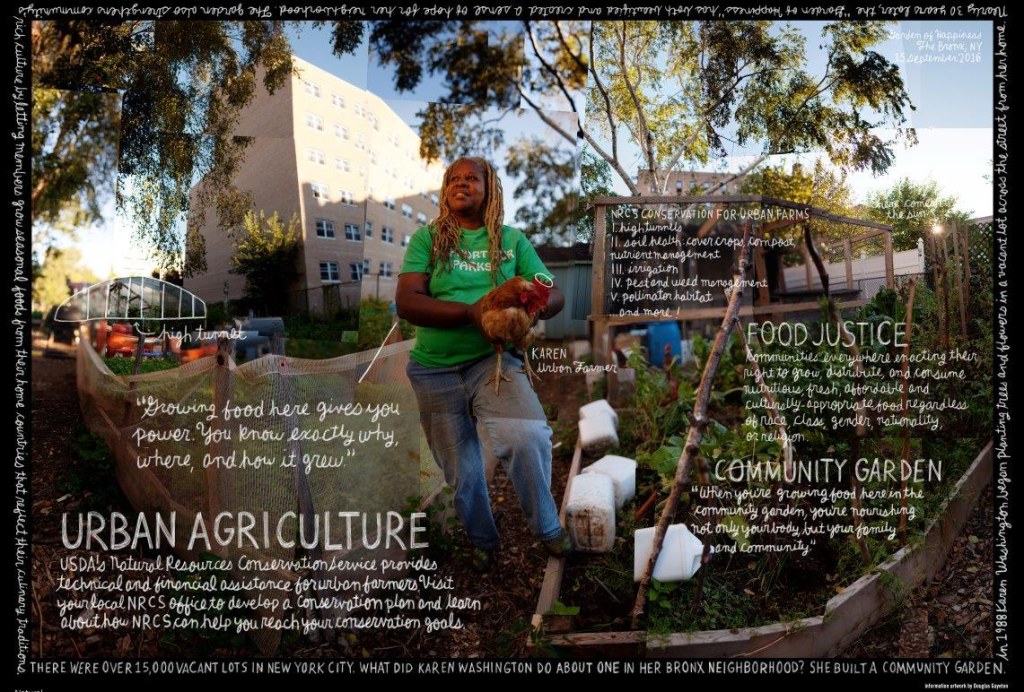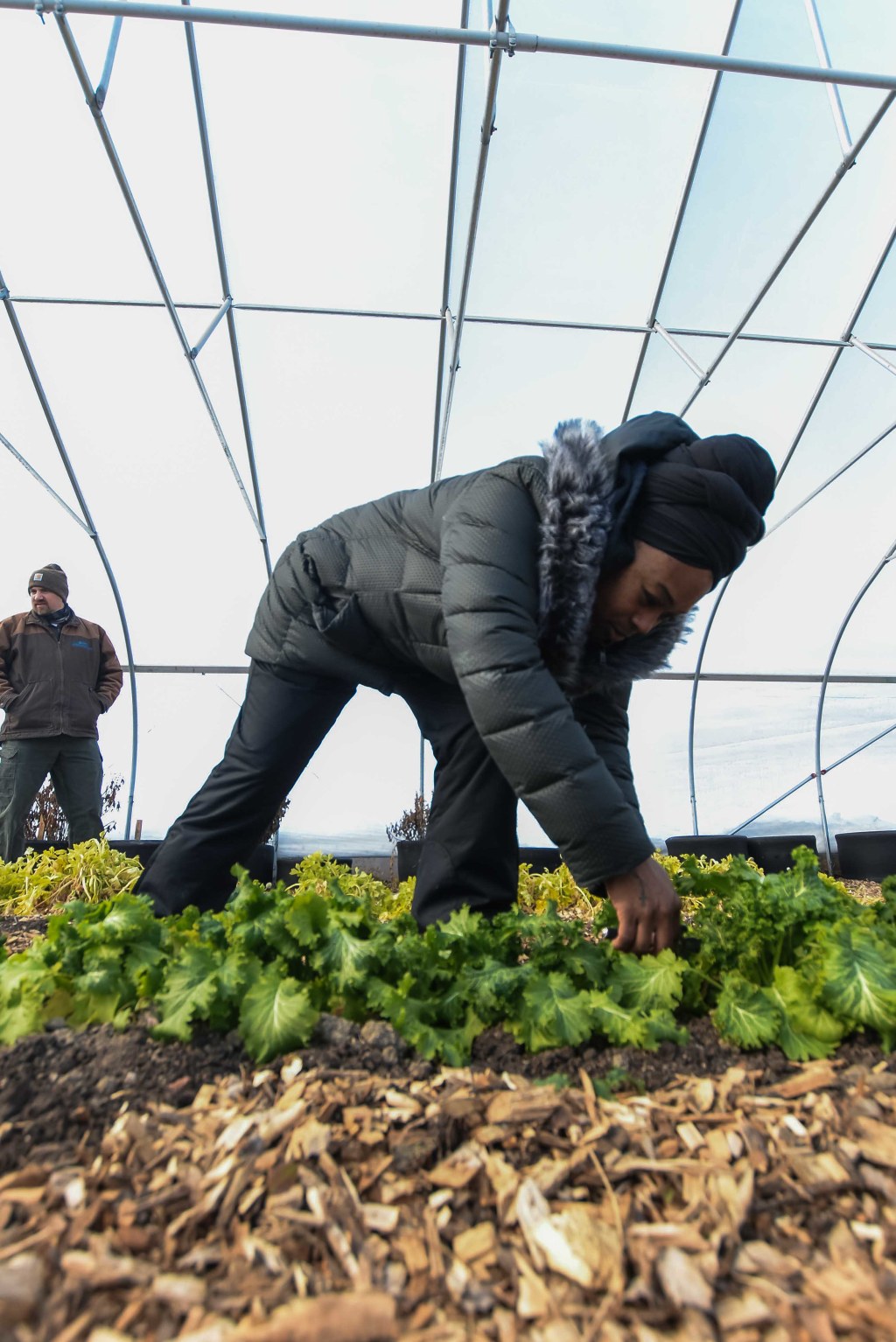Unlock Your Urban Agriculture Potential With USDA: Cultivate Your Own Organic Oasis!
Urban Agriculture USDA: Promoting Sustainable Food Production in Cities
Greetings, Readers! In this article, we will explore the concept of urban agriculture and how the United States Department of Agriculture (USDA) plays a crucial role in promoting sustainable food production in cities. Urban agriculture refers to the practice of cultivating, processing, and distributing food in urban areas. It encompasses various methods such as rooftop gardens, community gardens, aquaponics, and vertical farming. Let’s delve into the details and discover the benefits and challenges of urban agriculture.
Introduction to Urban Agriculture USDA
Urban agriculture has gained significant popularity in recent years as a means to address food security, environmental sustainability, and community development issues. The USDA recognizes the potential of urban agriculture in transforming cities into more resilient and self-sufficient communities. By supporting initiatives that promote urban farming practices, the USDA aims to enhance food access, stimulate economic growth, and reduce the environmental footprint of food production.
2 Picture Gallery: Unlock Your Urban Agriculture Potential With USDA: Cultivate Your Own Organic Oasis!


As part of its efforts, the USDA provides funding, technical assistance, and research opportunities to individuals, organizations, and communities engaged in urban agriculture activities. By collaborating with local governments, non-profit organizations, and academic institutions, the USDA strives to create a supportive environment for urban farmers and promote policies that facilitate the expansion of urban agriculture.
🌱 What is Urban Agriculture?

Image Source: southeastagnet.com
Urban agriculture refers to the practice of growing food in urban settings. It involves cultivating crops, raising animals, and producing food products within city limits. This can be done through various methods such as rooftop gardens, vertical farming, and hydroponics.
🏢 Who is Involved in Urban Agriculture?
Urban agriculture involves a diverse range of individuals and groups. It includes urban farmers, community organizations, non-profit groups, local governments, and researchers. These stakeholders work together to establish and maintain urban farms, community gardens, and other agricultural initiatives in cities.
📅 When Did Urban Agriculture Gain Popularity?

Image Source: usda.gov
The concept of urban agriculture has been around for centuries, but it gained significant attention in the late 20th century. The increasing awareness of the environmental impact of conventional agriculture, along with the rising demand for locally grown food, has fueled the growth of urban agriculture in recent decades.
🌍 Where Does Urban Agriculture Take Place?
Urban agriculture can be found in cities around the world. From New York City to Tokyo, urban farmers are utilizing vacant lots, rooftops, and even indoor spaces to grow food. The practice of urban agriculture is adaptable and can be implemented in various urban settings.
❓ Why is Urban Agriculture Important?
Urban agriculture offers numerous benefits. It helps increase food security by providing fresh and nutritious produce to urban communities. It reduces the distance between food production and consumption, resulting in fewer carbon emissions from transportation. Additionally, urban agriculture promotes community engagement, education, and social cohesion.
🌿 How Does the USDA Support Urban Agriculture?
The USDA supports urban agriculture through various programs and initiatives. It provides grants and loans to urban farmers, invests in research and development, and offers technical assistance to promote best practices in urban farming. The USDA also collaborates with other government agencies, local organizations, and academic institutions to create a supportive ecosystem for urban agriculture.
Advantages and Disadvantages of Urban Agriculture
Advantages of Urban Agriculture
1. Increased access to fresh and locally sourced food: Urban agriculture reduces the reliance on imported produce and provides communities with fresh, nutritious food options.
2. Environmental sustainability: By utilizing urban spaces for food production, urban agriculture reduces the need for land conversion, conserves water resources, and promotes biodiversity.
3. Community development: Urban agriculture fosters community engagement, social interactions, and skill development. It can serve as a platform for education, job creation, and neighborhood revitalization.
4. Climate change resilience: Local food production reduces the vulnerability of urban communities to disruptions in the global food supply chain caused by climate change or other crises.
5. Health benefits: Access to fresh produce promotes healthier eating habits, reduces the risk of diet-related diseases, and improves overall well-being.
Disadvantages of Urban Agriculture
1. Limited space: Urban agriculture often faces space constraints, making it challenging to scale up production to meet the demands of a growing population.
2. Soil contamination: Urban soils may contain pollutants from past industrial activities, requiring soil remediation efforts before cultivation.
3. High initial investment: Establishing urban farming infrastructure can be costly, especially for technologies such as hydroponics or vertical farming.
4. Zoning restrictions: Some cities have zoning regulations that restrict or prohibit agricultural activities in urban areas, limiting the potential for urban agriculture.
5. Lack of knowledge and skills: Successful urban farming requires specialized knowledge and skills, which may be a barrier for individuals or communities without access to training and resources.
Frequently Asked Questions (FAQs) about Urban Agriculture
1. What types of crops can be grown in urban agriculture?
Urban agriculture allows for a wide range of crops to be grown, including leafy greens, herbs, fruits, and vegetables. The selection of crops depends on factors such as climate, available space, and market demand.
2. Can urban agriculture be profitable?
Yes, urban agriculture can be profitable. By utilizing innovative growing techniques and targeting niche markets, urban farmers can generate income from selling their produce to local restaurants, farmers markets, or through community-supported agriculture (CSA) programs.
3. How can communities get involved in urban agriculture?
Communities can get involved in urban agriculture by participating in community gardens, supporting local farmers markets, and advocating for supportive policies that encourage urban farming. Individuals can also start small-scale urban farms in their own yards or balconies.
4. What are the challenges of implementing urban agriculture in densely populated cities?
In densely populated cities, space constraints and high land prices pose significant challenges to implementing urban agriculture. Additionally, zoning restrictions, limited access to capital, and the need for community support and participation can further complicate the process.
5. How does urban agriculture contribute to sustainable urban development?
Urban agriculture contributes to sustainable urban development by promoting food security, reducing food miles, minimizing the environmental impact of food production, and enhancing social and economic resilience within communities.
Conclusion
In conclusion, urban agriculture offers a promising solution to many of the challenges faced by modern cities. Through initiatives led by organizations like the USDA, urban farming can transform urban spaces into productive and sustainable food systems. By supporting local farmers, promoting access to fresh and nutritious food, and fostering community engagement, urban agriculture has the potential to create healthier, more resilient cities. It is up to us to embrace and support these initiatives, ensuring a brighter future for urban communities.
🌱 Take action today!
Support your local urban farmers and community gardens. Get involved in initiatives that promote urban agriculture and advocate for policies that enable its growth. Together, we can create more sustainable and resilient cities for future generations.
Friends, let’s cultivate a greener and healthier future through urban agriculture!
Final Remarks
Disclaimer: The information provided in this article is for informational purposes only. The content is not intended to be a substitute for professional advice or guidance. Urban agriculture practices may vary depending on local regulations, climate conditions, and available resources. Readers are encouraged to consult with local experts and authorities before engaging in urban agriculture activities.
This post topic: Gardens

